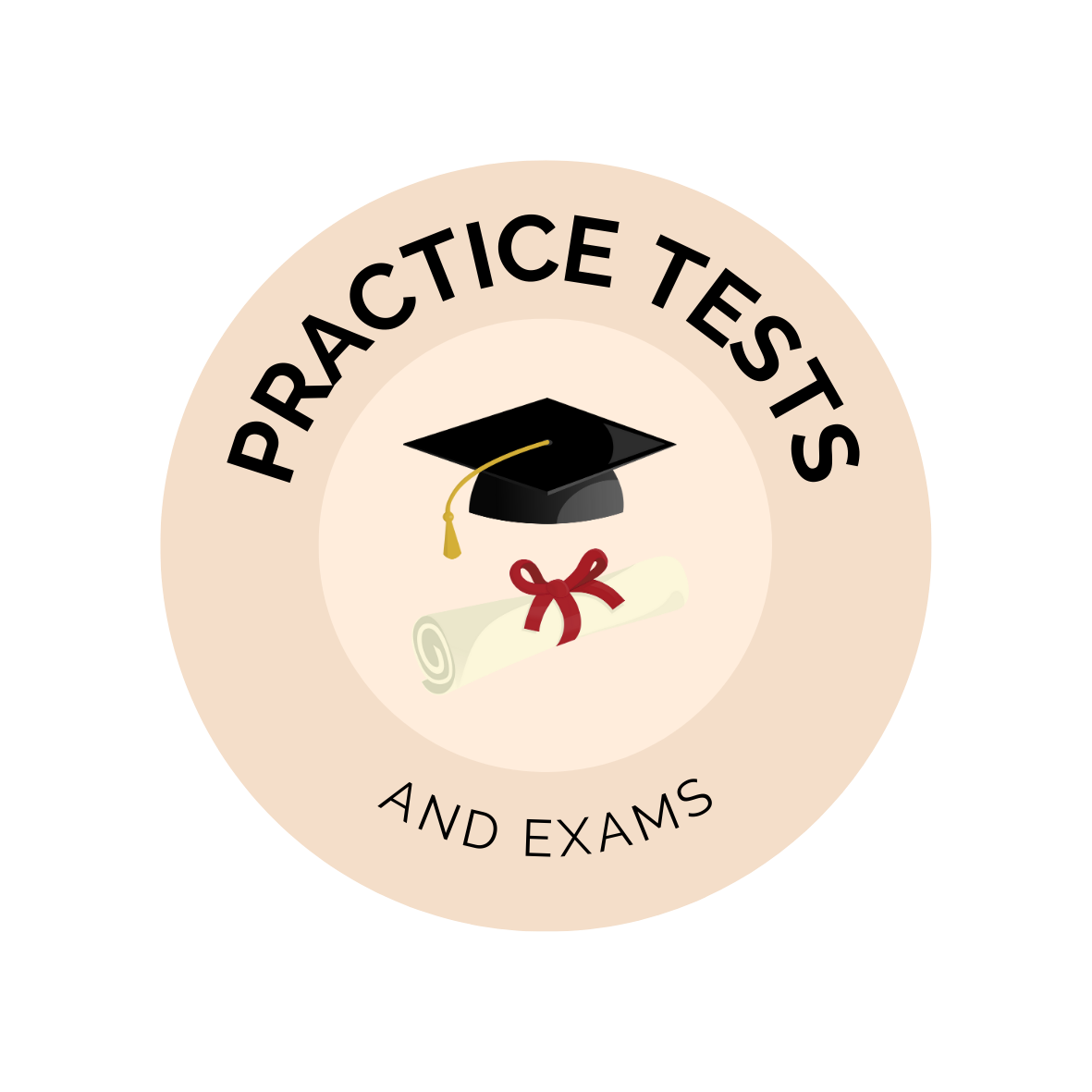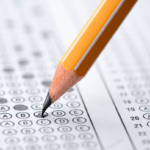How To Prepare For Verbal Reasoning Test
Verbal reasoning tests evaluate your ability to understand written information and draw conclusions. Excelling in these tests can boost your chances of success. In this guide, we will share effective strategies to help you prepare, so you can perform your best in verbal reasoning tests.
Verbal Reasoning Questions and Answers
Verbal reasoning tests get more challenging as you get older and move up in year level. For example, if you are 10 years old, you can expect the verbal thinking test to use simpler words and have less difficult word puzzles.
Below are the types of questions you may encounter:
1. Synonyms and Antonyms
These questions test your vocabulary by asking you to find words that mean the same or different things. To do well on these questions, you need to have a broad vocabulary and know how words relate to each other.
Example:
Synonyms:
Select the word that has the closest meaning to "enormous":
a) Tiny
b) Gigantic
c) Average
d) Small
Antonyms:
Choose the word that is most opposite in meaning to "brave":
a) Cowardly
b) Fearless
c) Bold
d) Courageous
2. Conditional Logic with If Statements
These questions show how well you can conclude from given statements and conditions. If you know how to use conditional thinking, you can solve hard problems and make smart choices.
Example:
If it rains, then the ground is wet. If the ground is wet, then the grass is damp.
Therefore, if it rains, the grass is damp.
a) true
b) false
3. Meaning of "All" and "Some"
These questions will test how well you understand quantifiers and how they change what you say. To answer these questions properly, you must be able to understand what is being said and figure out what it means.
All dogs have tails. If Spot is a dog, does Spot have a tail?
a. true
b. false
Some cars are blue. If a car is blue, is it guaranteed to be fast?
a. true
b. false
4. Classification of Attributes
For these questions, you'll need to figure out what a group of words has in common and which doesn't fit. Learning how to put things into groups and spot patterns is important.
Example:
Which word does not belong in the group based on the given attribute?
a) Circle
b) Square
c) Triangle
d) Rhombus
e) Pentagon
5. Relationships between Words
These questions test how well you can figure out how two words go together and how they are similar to another pair of words. If you want to do well in this area, you need to learn more about word association and analogies.
Apple is to fruit as potato is to:
a) Vegetable
b) Meat
c) Dairy
d) Grains
Cat is to meow as dog is to:
a) Bark
b) Purr
c) Hiss
d) Tweet
6. Statements and Truth Value
These questions test how well you can tell if a statement is true or false. Getting the right answer often requires careful thought and logical thinking.
Consider the following statements:
If it is raining, then the ground is wet.
If the ground is wet, then the flowers bloom.
If the flowers bloom, then bees are attracted.
Based on these statements, determine the truth value of the following statement:
"If it is raining, bees are attracted."
a) True
b) False
7. Rearranging Words
These questions ask you to change the order of words in a line so that it still makes sense. You need to be good at language, grammar and sentence building to do well on this type of question.
Example:
Arrange the words in the correct order to make a coherent sentence: "playground I the in like to play."
8. Letter Patterns
These questions test how well you can see and figure out patterns in a series of letters. You can do well in this area by getting better at seeing patterns and thinking logically.
Example:
What letter comes next in the following series? A, E, I, __
Word Relationship In Verbal Reasoning Test
Word relationships are based on meaning or usage. It examines how things are similar, different, cause something else, are part of the whole and more.
Below are the steps to answer this type of question:
Step 1 : Determine the meaning of the first pair of words.
Make sure you understand the first two words. It's crucial to understand comparative words.
For example, let's look at this comparison:
PENGUIN is to ANTARCTICA as KANGAROO is to:
A: Zoo
B: Desert
C: Forest
D: Australia
E: Grassland
A penguin is a bird that lives in Antarctica. Therefore, the basic connection is between the bird and where it lives.
Step 2 : Figure out the link or connection
Figure out what the words in the first pair have in common or what their link is. This link will help you figure out which word in the second pair goes with the first.
In this case, the link is that PENGUIN lives in ANTARCTICA.
Step 3: Make a link between the first pair of words and the second pair of words.
Apply the link you just found to the second pair of words and eliminate the answers that don't fit.
Remember that the connections between the words on the left should match those between the right.
Zoo, Desert, Forest and Grassland do not fit the link that has been made.
By getting rid of answer choices that don't fit the link or relationship, we can see that the right answer is D – Australia.
Verbal Reasoning Test Example
FIRE is to HOT as ICE is to:
A: Cold
B: Melting
C: Solid
D: Water
E: Freezing
First, figure out what the first pair of words means.
People usually think of heat or hotness when they think of fire.
Second, figure out the link.
Here is the main link:
FIRE is known for being HOT.
Lastly, use the link to connect the second set of words.
Let's use the link we just made to look at the possible answers for the second pair of words:
A: Cold - This choice is the opposite of hot, which makes sense given the link between fire and hot.
B: Melting -Ice can melt, but that doesn't have anything to do with the fact that fire is hot.
C: Solid - Ice is a solid form of water, but it doesn't show the link between being cold and being hot.
D: Water - Even though ice can melt into water, this doesn't exactly match how fire and hot are related.
E: Freezing - This choice is about how water turns into ice, which doesn't fit with the established relationship.
By getting rid of the answers that don't fit the established relationship, we can see that the right answer is A, which is cold.
Statements With True or False In Verbal Reasoning Test
Some questions on verbal thinking tests ask you to find two statements that, when put together, prove another statement. To help you understand better, here are some strategies:
Strategy 1:
Finding the Most Important Facts: To do well on true or false questions, you need to find the most important claim that can be proven or disproven.
Consider an example: "John is a successful engineer with his own firm." In this statement, we can extract the following essential facts:
1. John is an engineer.
2.John has his own firm.
3. John is successful in his work as an engineer.
We can focus on the claims that prove or disprove these important facts if we know them.
Strategy 2:
Analysing the Given Statements: If there are more than one statement, look at each one carefully to see if it is vital and needed to prove the first one. Pay close attention to what each statement says and what information it gives.
Let's look at this example:
Find the two statements that prove that: "John passed the exam with a perfect score."
1. John studied diligently for weeks.
2. The exam was challenging and required extensive preparation.
3. John answered all the questions correctly.
4. John's score was above the passing score.
A: 1 & 2
B: 2 & 3
C: 3 & 4
D: 1 & 4
The answer is C: 3 & 4.
Together, these two sentences give us all the proof we need. John passed the test with a perfect score if he got every question right and his score was higher than the minimum needed to pass.
So, choice C gives you the two statements that prove the given statement together.
Tips To Prepare For Verbal Reasoning Test
The tips to prepare for this entrance exam are listed below:
1. Read a lot and try to learn new words.
To improve your vocabulary, look up definitions, synonyms and opposites of words.
2. Practice often
Answer verbal thinking questions often to get better at them. Look for ways to practice verbal reasoning online or buy workbooks with a range of question types.
3. Practice thinking in a logical way
You can do this by using logic puzzles, questions and brain games. Verbal reasoning is easier if you're good at analyzing material and drawing logical conclusions.
4. Review Your Answers
It's important to think about the answers you gave to verbal reasoning questions and get feedback from mentors or tutors. By looking at your work and trying to figure out what went wrong, you can find ways to get better.
You will get better at verbal reasoning if you are open to comments.
Mock Tests and Practice Resources For Verbal Reasoning Test
To help you get ready, it's best to use trusted materials that are made for verbal reasoning practice. These tools include practice books, online platforms and sample question papers.
Set aside time to study, try to recreate test conditions and keep track of your work to see how much you've improved. By using mock tests and other practice materials well, you can improve your verbal thinking skills and do better on the real test.
Final Words
At Titan College, we're happy to offer a variety of high-quality practice tests for verbal reasoning. These tests are made to feel like the real test and give you a lot of practice.
By taking our practice tests, you can build confidence, figure out what you need to work on and improve your verbal reasoning skills.
Good luck!


0 comments